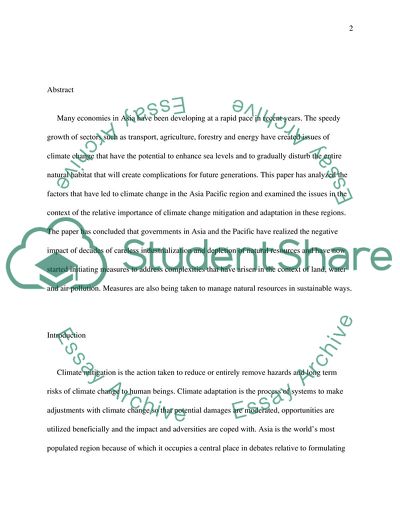Cite this document
(Approaches to Climate Change in the Asia and Pacific Region Term Paper, n.d.)
Approaches to Climate Change in the Asia and Pacific Region Term Paper. https://studentshare.org/environmental-studies/1755187-the-distinction-between-climate-change-mitigation-and-adaptation-is-often-discussed-and-debated-discuss-the-relative-importance-of-these-two-approaches-to-climate-change-in-the-asia-and-pacific-region
Approaches to Climate Change in the Asia and Pacific Region Term Paper. https://studentshare.org/environmental-studies/1755187-the-distinction-between-climate-change-mitigation-and-adaptation-is-often-discussed-and-debated-discuss-the-relative-importance-of-these-two-approaches-to-climate-change-in-the-asia-and-pacific-region
(Approaches to Climate Change in the Asia and Pacific Region Term Paper)
Approaches to Climate Change in the Asia and Pacific Region Term Paper. https://studentshare.org/environmental-studies/1755187-the-distinction-between-climate-change-mitigation-and-adaptation-is-often-discussed-and-debated-discuss-the-relative-importance-of-these-two-approaches-to-climate-change-in-the-asia-and-pacific-region.
Approaches to Climate Change in the Asia and Pacific Region Term Paper. https://studentshare.org/environmental-studies/1755187-the-distinction-between-climate-change-mitigation-and-adaptation-is-often-discussed-and-debated-discuss-the-relative-importance-of-these-two-approaches-to-climate-change-in-the-asia-and-pacific-region.
“Approaches to Climate Change in the Asia and Pacific Region Term Paper”. https://studentshare.org/environmental-studies/1755187-the-distinction-between-climate-change-mitigation-and-adaptation-is-often-discussed-and-debated-discuss-the-relative-importance-of-these-two-approaches-to-climate-change-in-the-asia-and-pacific-region.


